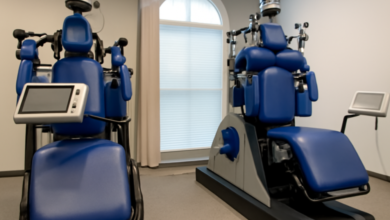Avoiding Common Medical Coding Errors: A Guide for Healthcare Professionals

Medical coding is the backbone of efficient healthcare operations. Accurate coding ensures timely reimbursements, minimizes claim denials, and supports compliance with healthcare regulations. However, even the most experienced coders and physicians can encounter mistakes. Common medical coding errors not only delay payments but can also trigger compliance issues and audits. By understanding these pitfalls and implementing best practices, healthcare providers can safeguard revenue and enhance operational efficiency.
The Importance of Accuracy in Medical Coding
Medical coding transforms diagnoses, procedures, and services into standardized alphanumeric codes. These codes are essential for billing, insurance claims, and regulatory compliance. A single error can lead to claim rejections, revenue loss, or even legal consequences if patterns of inaccuracies suggest fraud. Identifying and addressing the most frequent coding mistakes is crucial for both financial health and patient care quality.
Common Medical Coding Errors That Affect Healthcare Practices
Incorrect Use of ICD and CPT Codes
One of the most widespread mistakes is selecting the wrong ICD-10 or CPT code. This can happen due to similarities between codes or inadequate documentation. For example, confusing two conditions with overlapping symptoms may result in a code that does not match the actual diagnosis or service provided.
Upcoding or Downcoding
- Upcoding occurs when a higher-level service code is used than what was actually performed, potentially leading to compliance issues and audits.
- Downcoding, on the other hand, involves selecting a lower-level code, often resulting in underpayment and revenue loss.
Both errors compromise accuracy and can damage a provider’s reputation.
Missing or Incomplete Documentation
Accurate coding relies on detailed provider documentation. Missing information—such as laterality, specificity, or procedure details—often forces coders to choose less precise codes. This not only reduces reimbursement but also increases the risk of claim denials.
Unbundling Services
Sometimes services that should be billed together under a single code are incorrectly separated, or “unbundled.” While unbundling may seem minor, it can be viewed as a compliance violation and trigger penalties during audits.
Misuse of Modifiers
Modifiers help clarify specific circumstances in billing, such as multiple procedures or unique situations. Improper modifier use—whether from oversight or misunderstanding—can lead to improper payments and red flags with payers.
Failure to Stay Updated
Medical coding guidelines evolve regularly. Coders who rely on outdated books or software may inadvertently submit obsolete codes. This is one of the most preventable yet common medical coding errors.
Consequences of Coding Errors
The financial and operational impacts of coding errors are significant:
- Claim Denials and Delays: Incorrect codes are one of the top reasons claims are rejected by insurers.
- Revenue Loss: Even small, repeated mistakes can lead to substantial underpayments over time.
- Audit Risks: Frequent errors may attract the attention of regulatory bodies, exposing practices to fines or penalties.
- Strained Provider-Payer Relationships: Consistent inaccuracies can damage trust between healthcare providers and insurance companies.
Strategies to Prevent Common Medical Coding Errors
Invest in Regular Training
Ongoing education ensures coders and staff remain updated on the latest coding changes, payer requirements, and compliance rules.
Emphasize Complete Documentation
Encouraging physicians to provide detailed clinical notes helps coders assign the most accurate codes. Electronic health record (EHR) prompts can assist in capturing required details.
Use Advanced Coding Software
AI-driven coding solutions and coding validation tools help reduce errors by flagging inconsistencies and suggesting appropriate codes.
Implement Regular Audits
Internal audits provide a safety net by identifying recurring mistakes before they escalate into costly compliance issues.
Encourage Communication Between Coders and Clinicians
Open communication ensures coders can clarify uncertainties and avoid assumptions that lead to errors.
Conclusion
Healthcare providers must prioritize accuracy in medical coding to protect revenue, ensure compliance, and maintain trust with payers and patients. While common medical coding errors are a frequent challenge, they can be significantly reduced with training, updated technology, and strong collaboration between clinical and billing teams. By proactively addressing these errors, practices not only avoid costly setbacks but also strengthen their financial and operational foundation.





